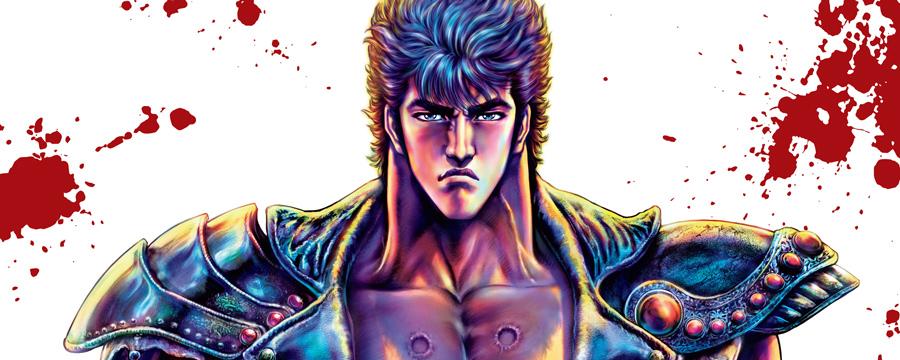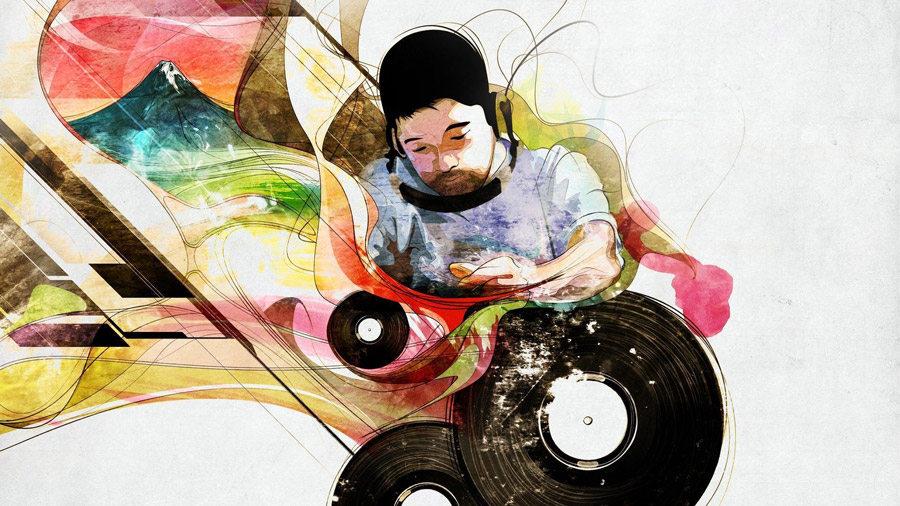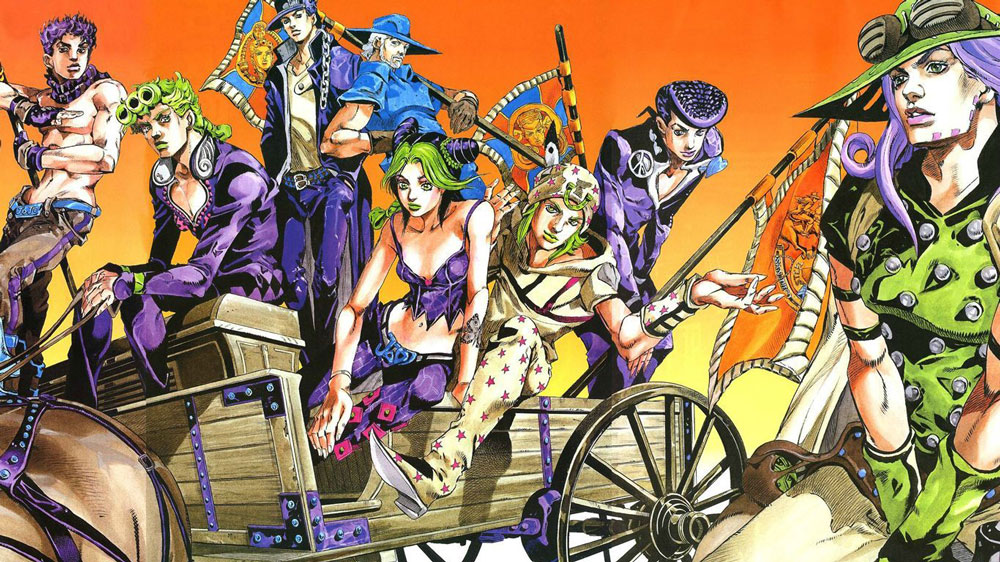Recontextualising history is no new feat for anime filmmakers. Series such as Demon Slayer (2019), produced by Ufotable and based on the manga by Koyoharu Gotouge, taking Japan’s Taishō era, a period known for its liberal movement, and presenting an alternate history in which a secret war between demons and a society known as the Demon Slayer Corps has been waging for centuries.
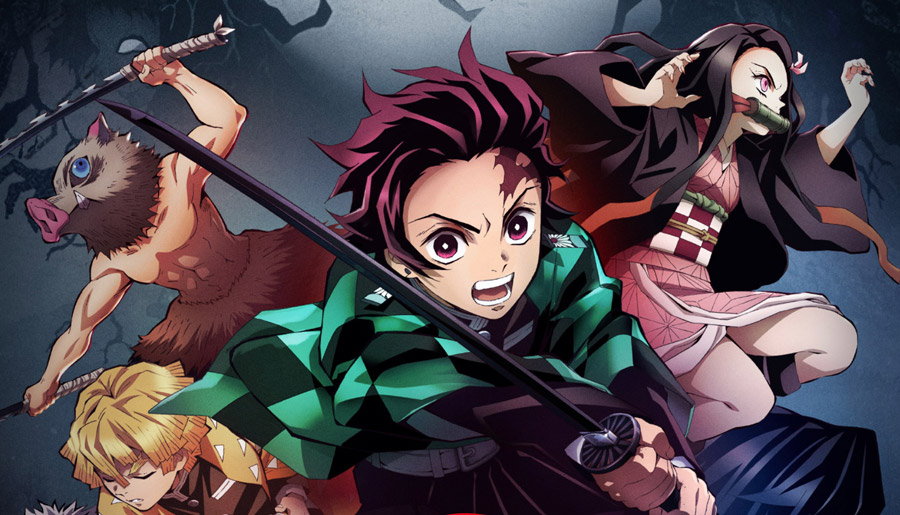
Hiroyuki Okiura’s Jin-Roh: The Wolf Brigade (1999), on the other hand, takes this historical alteration to another level, depicting a skewed vision of Japan after a fictional occupation by a victorious Nazi Germany post World War Two. Written by Mamoru Oshii, and based on his manga, Kerberos Panzer Cop (1988), Jin Roh is a political thriller that utilises this “what if” element to explore the consequences of violence and the inescapable ramifications of war.
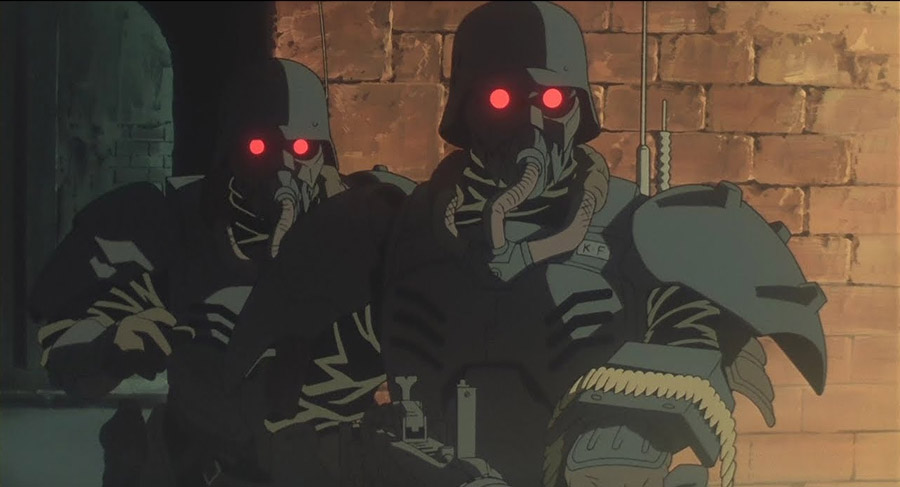
While these earlier examples act to reconfigure Japanese history, utilising heritage to present new stories within alternate histories, neither seems to broach the same kind of coalition between culture and context as Shinichirō Watanabe’s seminal Samurai, hip-hop mash-up, Samurai Champloo (2005).
Set during the Edo Period, an era of Japanese history in which the nation saw an influx of international influences after an extensive interval of exclusivity (up until the mid-1800s, Japanese borders were closed off to trade and travel routes), Samurai Champloo depicts the tale of two wandering samurai and their quest to help the spirited young woman locate a samurai who smells like sunflowers.
The Music of Samurai Champloo
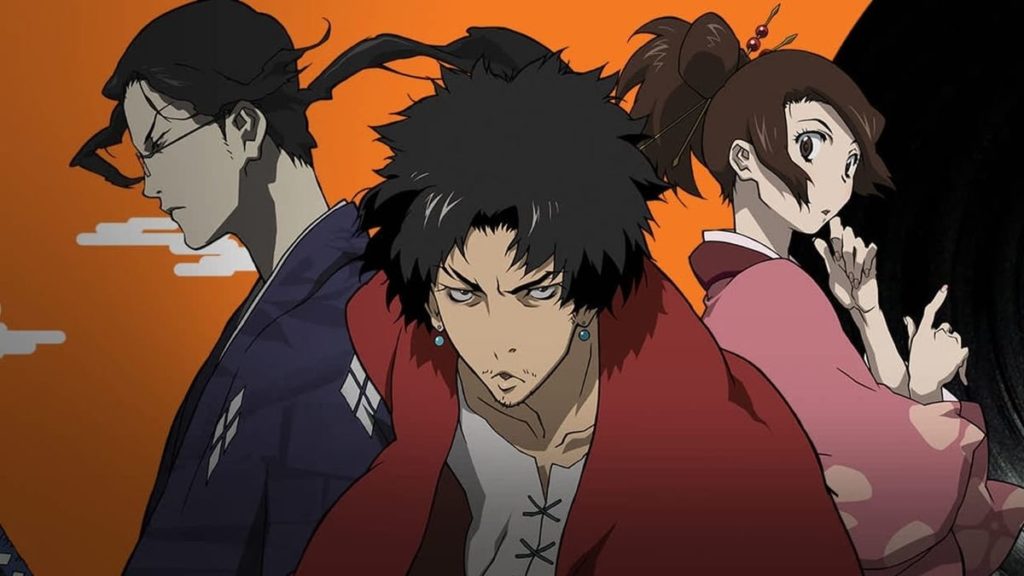
The first thing you’ll notice when jumping into Watanabe’s samurai venture is its use of hip-hop. Utilising beats from Shinji “Tsutchie” Tsuchida of Shakkazombie, Fat Jon, and samples from FORCE OF NATURE, brought together by the late Nujabes to create a tapestry of lo-fi goodness; predating the later proliferation of the beloved study core genre.
The opening theme, “Battlecry”, featuring Shing-02, is Nujabes’ way of introducing the viewer to the series’ unique transmutation of the past and present. With Watanabe wanting to take two of his favourite things, Chambara (“sword fighting” movies) and hip-hop, and blend them together to create something entirely new.
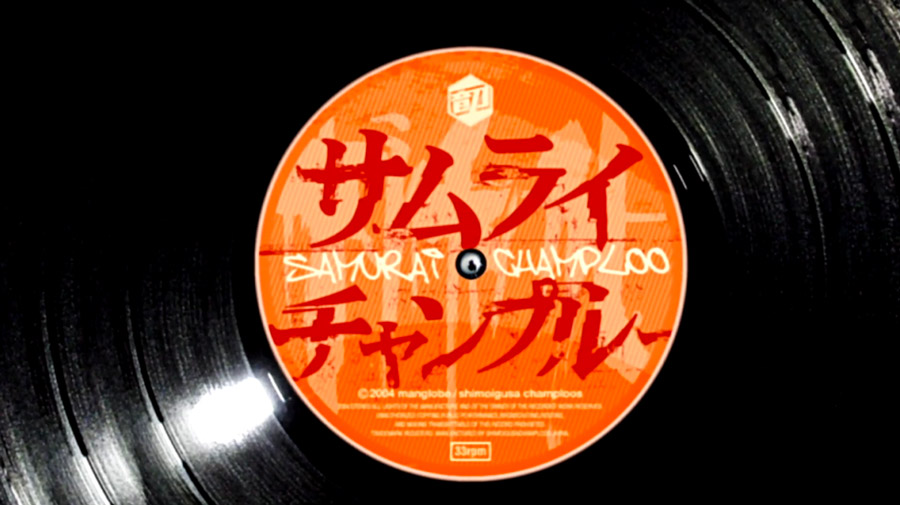
After the success of Cowboy Bebop (1998), Watanabe’s previous musically-entwined masterpiece, he was allowed to make whatever he wanted, taking the same approach as his jazz meets space cowboy series and going full emcee X ronin. And with the help of Nujabes and team, Watanabe was able to make it so, with the music becoming a staple of the series, enticing fans from all over the world to tune in, gradually turning a small cult following into an international phenomenon, and cementing the anime as one of the greatest of all time.
The slick rhythms and propulsive attitude of the music came together with the series’ free-flowing animation style, capitalising on Watanabe’s experience directing action and marrying the countercultural origins of hip-hop with the counterfactual elements of the setting.
Reimagining Edo Japan
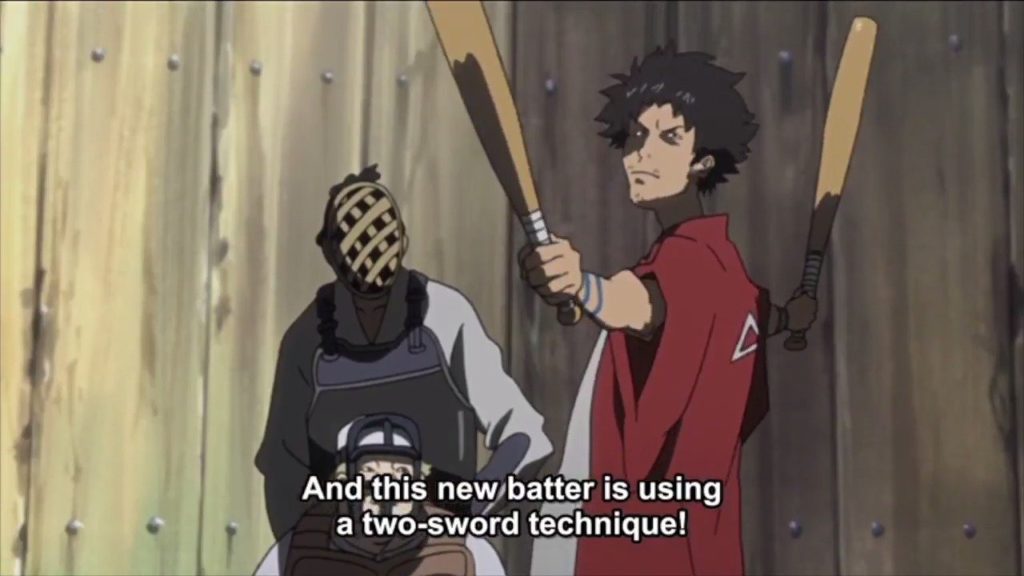
The recontextualisation doesn’t stop with the music, with almost every facet of the anime presenting a combination of art and history that both situates the series within its immediate setting while utilising modern concepts to secure it to the present.
With episodes dedicated to the emergence of baseball in Japan, urban graffiti sprawled across city walls, a travelling priest attempting to instil Christianity for monetary gain, Samurai Champloo works to take the traditionally secluded nature of the country and integrate anachronistic concepts as a way to personify the move from feudal to modernity.
Moreso, the series succeeds in tethering this historical shift to the nation’s adjustment to life after World War Two, with the Edo period bringing the death of the samurai class as symbolic of the change in cultural perceptions of Japanese youth.
Provoked by the country’s move to liberalism which negated the need for bushido as shogunates no longer needed the legendary warrior class to enforce law and order, the series uses contemporary hip-hop culture to connote the slow phasing out of conservative Japanese values as seen during the Edo period and in the aftermath of World War Two.
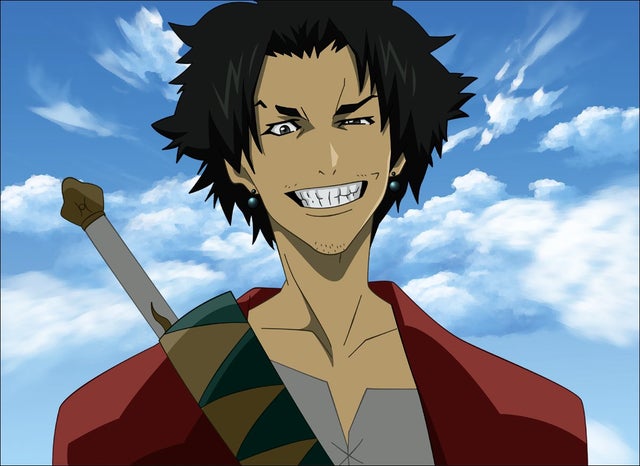
Mugen, one of the two staple samurai, is more beast than man, with a fighting style that seems more akin to breakdancing than the traditional stoic sensibilities of Jin, the other mainline samurai. Through the contrast of these characters, Watanabe conveys the changing attitudes of youth culture post World War Two. Mugen, carefree and unrestrained by social order seems to operate on a new plain of countercultural ideologies, doing whatever he can for his next meal, while Jin personifies the more traditional notion of samurai; characterised by stoicism and heroism.
Samurai Champloo works to deconstruct history through the lens of modernity, presenting ronin as exemplars of a country at a pivotal point of change and integrating hip-hop culture as a way to personify an impending cultural shift.
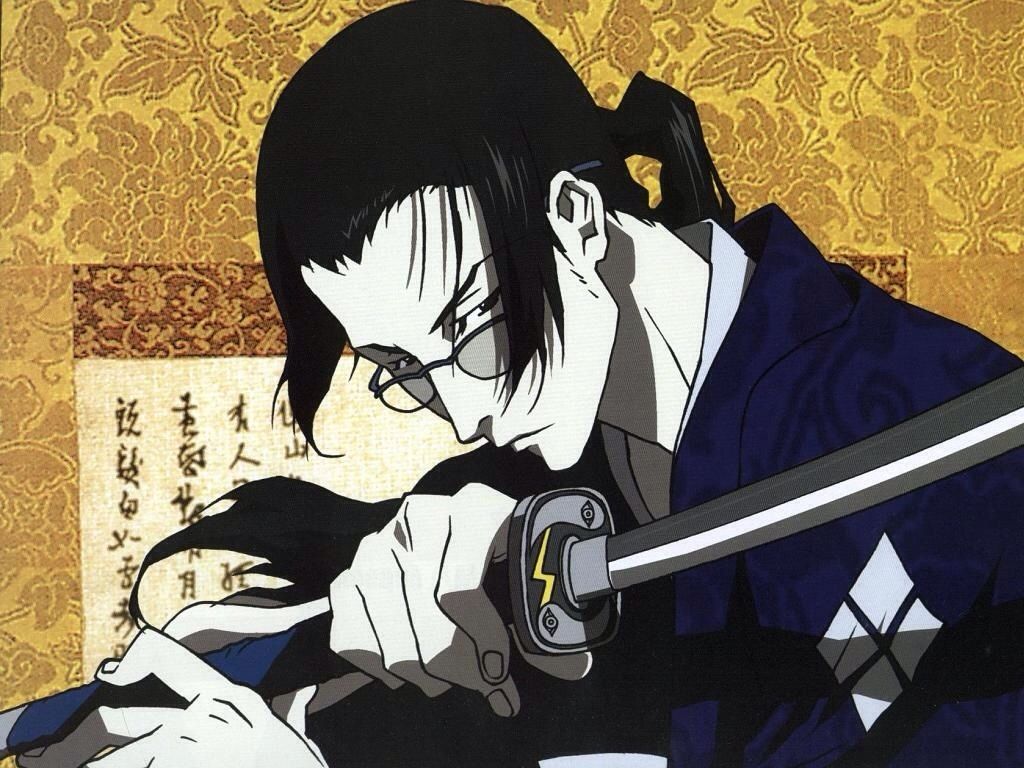
The word “champloo” derives from the Okinawan stir fry dish chanpurū, which itself means “something mixed” or as suggested by Bonsai Pop, something “improvised”. It acts as a perfect evocation of the series’ loose narrative which depicts our three heroes travelling across Japan, out of time and out of place, in a non-linear road movie-esque story with episodes taking place out of chronology and seemingly disconnected from each other.
Much like Cowboy Bebop’s jazz-inflected approach to the tale of misfit bounty hunters trying to score big in the expanse of space, Samurai Champloo feels more about the convergence of opposites; narrative instruments bouncing off each other in order to create a new sound.
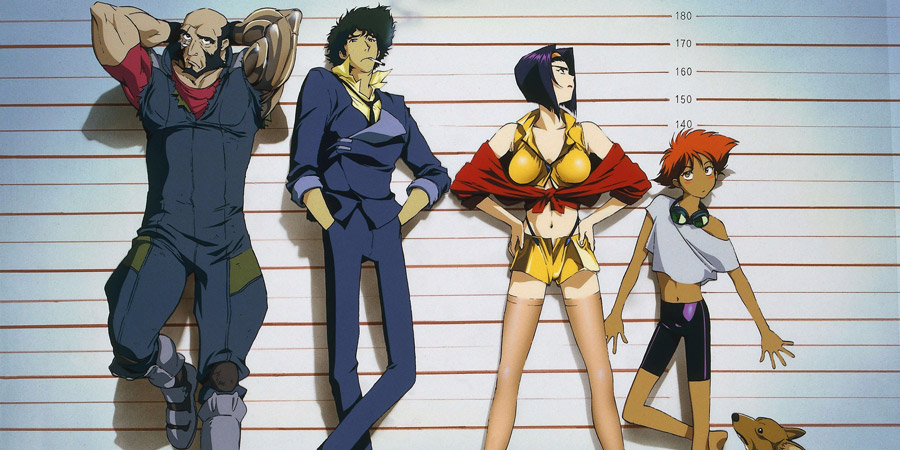
Mugen and Jin sit at opposite ends of the samurai spectrum, the use of modern cultures (hip-hop, street art, beatboxing) conflict with the historical setting, while the characters themselves seem at war with the liberalism of the Edo period.
Both Mugen and Jin struggle to fit neatly into the series’ setting, with Mugen coming from a low-class, troubled childhood, that has made him uncaring and quick to temper, while Jin, a classically trained samurai, can’t seem to shake his upbringing in a world that no longer sees his class as necessary.
When they first meet, both Mugen and Jin want to kill each other, seeing the other as exemplars of everything they hate about society; Jin views Mugen as the most disreputable fighter he’s ever come across, while Mugen sees Jin as an outdated personification of social order and tradition. Yet, it is through their coalition that things start to make sense for one another.
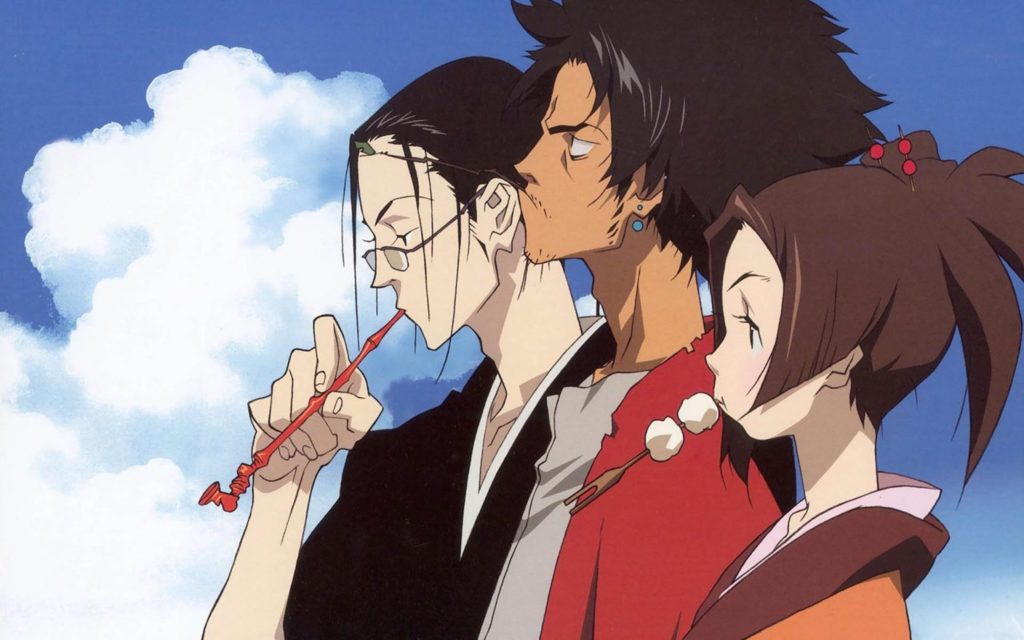
In the opening of the first episode, we find the two samurai on the cusp of execution at the hands of a tyrannical governor. Yet, when taunted by the governor who offers them a chance at freedom, Mugen responds
“I’d rather die on my feet with my head held high,” to which Jin responds “Well said. I agree with him.”
This accentuates the dichotomy between the characters; that while each harbours a deep-set hatred for the other’s ideologies, they share an affinity for pride and honour.
Modern Concepts & Anachronisms
Through its integration of anachronistic devices such as hip-hop culture with the setting, youthful attitudes to tradition, violence in an era of peace, Samurai Champloo works to explore the nature of existence through contrast and improvisation. Jamming, sketching, cooking, conceiving; art comes from rumination. Bouncing ideas off ideas until one of them sticks. In the case of Samurai Champloo, it’s the idea that opposites attract and when used in tandem, have the ability to enhance art, exponentially.
Inclusivity is at the heart of Samurai Champloo. Through the use of hip-hop amidst a historical context, the series seems to convey a notion of racial acceptance. Despite being a (rightfully) African American music culture, Watanabe somewhat reconfigures its ownership, enabling Samurai Champloo’s soundtrack to transcend cultural boundaries and prove that anyone can create slick beats and cool charm. Yet, more so, the series seems to evoke a sense of inclusivity.
There are LGTBQ characters in Samurai Champloo. There are women fighting to escape the confines of their societal roles. Fuu, for instance, is a lowly tea-serving teenager, who fights against the preconceived notions of her gender class and works to engender her own agency in a setting that would traditionally have her be kept subservient to her patriarchal overlords. Samurai Champloo works to deconstruct Japan’s traditional seclusion and celebrate characters and cultures that have many times been exploited or misrepresented in the anime canon.
As cited in the series art book, Roman Album: Samurai Champloo (2007), there was a conscious inclusion to emphasise cultural acceptance and tolerance of minorities including the indigenous Ainu people, foreigners, LGBT people. While referring explicitly to the convergence of hip-hop and samurai in the series, Watanabe confirms this sensitivity to cultural appropriation in Samurai Champloo, explaining in an interview with Charles Solomon for The New York Times, that
“I believe samurai in the Edo period and modern hip-hop artists have something in common. Rappers open the way to their future with one microphone; samurai decided their fate with one sword.”
This sentiment can be transposed to all minorities who find themselves ostracised by society. That while thwarted by oppression – political or otherwise – there is always a way to fight back.
For Mugen and Jin, it’s their swords, their pride, their open rejection of social norms and their want to find purpose in a world that sees them as lacking. For Fuu, it’s her desire to escape the restraints of her gender class, to venture on her own path and locate the sunflower samurai despite the world claiming her and her goals to be insignificant. It is the spirit of individuality, and the ability to seek one’s own path that characterises Samurai Champloo, a meandering waltz through life in which the journey speaks louder than the dream.
While seemingly seeking an empty objective, with our characters edging slowly towards a near-impossible task (sunflowers don’t even have a smell), the journey itself is the goal. Instilled in the music, the coalition of cultures and the dichotomy of characters, it is the improvisation that comes with finding that path through life that creates purpose. Not the act of getting there, of finding the sunflower samurai, but the adventure of life itself. In that stead, Samurai Champloo shows itself to be a much higher piece of art than just hip-hop meets samurai. It’s life, in all its purposelessness, mixed with slick samurai swordplay and mellow jazz-hop beats.
It’s the perfect anime for the global era. Where, due to the proliferation of the internet, audiences are thrown anything and everything all at once, and nothing seems everlasting. Instead, Samurai Champloo offers a meandering feeling of rootlessness that works to celebrate the journey rather than the goal itself, as our characters flow through a fictionalised Edo period, eating, drinking and fighting their way through life and life’s shenanigans.










































